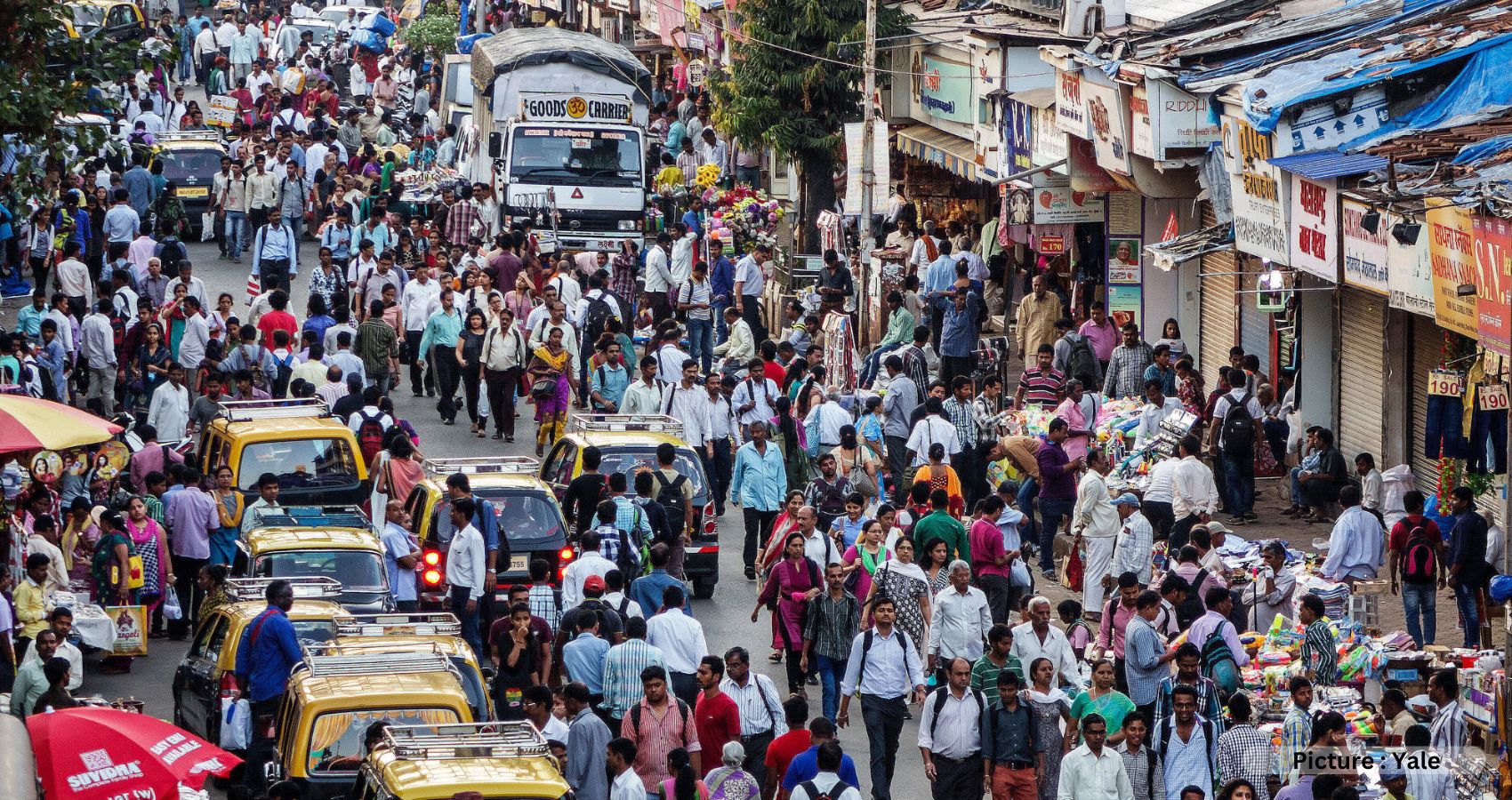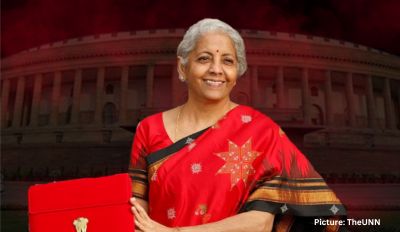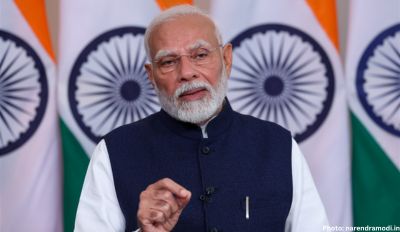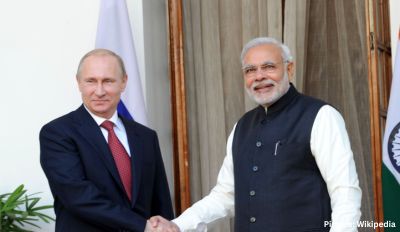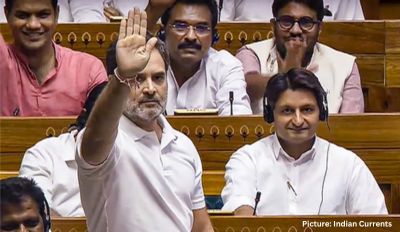According to recent calculations made by the United Nations, India will surpass China in terms of population by the end of this weekend. While China has held the title of the world’s most populous country for many years, restrictive policies limiting families to one child have led to a dramatic decrease in China’s birth rate and allowed India to advance. However, becoming the most populous country in the world is not a title that is necessarily desirable.
Prime Minister Narendra Modi has expressed concern about India’s “population explosion” and has praised families who carefully consider the impact of having more children. “In 21st-century India, the ability to fulfill dreams starts with a person, starts with a family. If the population is not educated, not healthy, then neither the home nor the country can be happy,” Modi has said.
But how did India’s population become so large, and how long will it continue to grow? The World Population Prospects data of the United Nations was analyzed, and experts were consulted by journalists to gain insight into India’s demographic shift.
What factors contributed to India’s massive population?
Understanding fertility rates is essential in determining a country’s population growth or decline. It is generally accepted that the average fertility rate, which is the number of children per woman, must be at least 2.1 for a population to maintain itself, and even more for it to grow. In the 1960s, India’s fertility rate was at 6, similar to some African countries today. However, the government’s latest nationwide assessment period from 2019 to 2021 showed that India’s total fertility rate dropped to 2.0, down from 3.4 in 1992 to 1993. Despite the decrease in fertility rates, the population continues to grow due to demographic momentum, where large cohorts of younger individuals grow into the age when they become parents.
Frank Swiaczny, a senior researcher at the Federal Institute for Population Research, explained that “when the fertility rate drops, the population continues to grow for several decades. And that is because younger, large cohorts are still growing into that age when they become parents.” Therefore, even with a replacement or sub-replacement fertility rate, India’s population will continue to grow slowly because of the significant number of women entering their reproductive years.
India’s fertility rate is unevenly distributed across the country, leading to a north-south divide that sees more babies born in the north. However, even the highest fertility rate in India, which is 3.0 in Bihar, is not considered high, according to Barbara Seligman, chief strategy and growth officer, and senior vice president at PRB, a non-profit organization that focuses on demographic data and population research. Seligman added, “It’s really striking to see just how many states are below replacement level. All but five states — Bihar, Meghalaya, Uttar Pradesh, Jharkhand, Manipur — are at that level, and notably, they’re all in the north.”
In contrast, southern states, such as Goa, have a fertility rate similar to some countries in southern Europe that are currently struggling to support an aging population with a shrinking workforce. Experts say India’s leaders would wise not to ignore this trend. According to the UN’s classification, India is now an “aging society,” where 7% of its population is aged 65 or older. In some states, such as Kerala in southern India, the population over 65 has doubled in the last 30 years and is now at 12%. This trend is expected to extend to more states, given the low total fertility rate.
“We’re going to see more and more states over the course of the next 30 years aging in the way that Kerala is now,” Seligman said. This trend can have significant implications for India’s economy, healthcare system, and social infrastructure, as older populations tend to have greater healthcare needs and require support from younger populations, who are the ones who have to bear the burden of such support.
India’s leaders must consider these implications as they shape policies to manage the country’s demographic trends. While India’s population growth may slow down due to lower fertility rates, the aging trend must be addressed. To ensure that India’s aging population can live comfortably and with dignity, long-term planning and investment in infrastructure, including health, housing, and employment, are critical. In conclusion, India’s leaders must recognize the demographic reality and take necessary measures to tackle these challenges. As Frank Swiaczny noted, “maintaining a balance between the size, composition, and distribution of the population is more important than when confronted with the choice of adopting policies to either raise or reduce fertility.”
India’s Population Growth Rate Slows Down
India has a rapidly growing population, but its growth rate has slowed down, according to UN data. The country’s population is expected to peak at 1.7 billion in 2064. Currently, over 40% of India’s population is under the age of 25, with an estimated median age of 28 in 2023, which is almost a decade younger than China’s. India’s working-age population is more than 900 million, which is expected to reach 1 billion in the next decade. This young and relatively low-paid workforce is largely English-speaking, digitally literate, and known for their entrepreneurship, making India an attractive alternative manufacturing hub for Western companies.
However, India’s contribution to the share of the world’s working-age population is expected to decline in the coming years, giving way to a younger population of workers emerging from Africa. While India has a significant number of working-age people, experts caution that the nation needs strong policies to capitalize on its youth. “A large number of people is not enough, we need to come up with a holistic plan,” said Sonalde Desai, Director of the National Council of Applied Economic Research (NCAER) and Professor at the University of Maryland.
India needs people with the skills to fill high-value jobs, and an economy that produces these types of jobs. “We need people who have the skills to fill some of the high-value jobs and an economy that produces these high-value jobs,” said Desai. Poonam Muttreja, the Executive Director of the Population Foundation of India, said that addressing this gap is “imperative for India to progress to fulfill its aspirations of being a developed country.”
India’s reputation for entrepreneurship, combined with a young and digitally literate workforce, has made it an attractive destination for foreign investment. However, the country must ensure that its young workforce is equipped with the skills needed for the jobs of the future. The government should focus on policies that enable the development of higher-value jobs and invest in programs that provide education and training for workers to meet the demands of a changing economy. “The challenge for India is to make sure that a young population translates into a productive workforce,” said Desai.
What’s next for India?
India, one of the world’s poorest countries per capita, is experiencing unprecedented economic growth, moving up global economic league tables. Its economy is now the fifth largest, and among the fastest growing, in the world at nearly $3.5 trillion. However, India’s fortune is not evenly distributed, and poverty is a daily reality for millions of Indians. Moreover, while India has a large young population willing to work, figures show that there aren’t enough jobs for them, particularly in economically disadvantaged regions in the north, reliant on agriculture.
According to the World Bank, India is expected to outperform all other major economies, with growth of 6.6% by 2023, compared to 4.3% for China and just 0.5% for the United States. Some projections estimate that India will take the third position in the next 10 years and become only the third country with a GDP worth $10 trillion by 2035. Experts say that population growth can be a tremendous productive force for the economy, but economic growth hinges on providing good quality, productive, and well-remunerated jobs.
Sabina Dewan, a senior visiting fellow at the Center for Policy Research, said, “If India doesn’t get the balance right, it risks squandering the considerable advantage of being the world’s most populous country with the world’s largest share of working-age human capital. The challenge of educating, providing training, and enough good quality jobs is huge. If we don’t create enough good jobs, we waste the tremendous potential of our workers. And we could be looking at a youth population that has greater aspirations than ever before but few opportunities for income generation.”
India needs to invest more in education beyond primary school, particularly for women. Although comparisons show that India has a significant population of younger women ready and willing to work, their participation level in the labor force – the estimation of the active workforce and people looking for work – was just 19% in 2021, which was less than half the overall labor force participation rate of 46%, one of the lowest in Asia. In comparison, China and the United States’ comparative rates were 68% and 61%, respectively.
Furthermore, the problem is worse in economically disadvantaged regions in the north, such as Uttar Pradesh, which is home to 17% of India’s population but has only 9% of its industrial jobs. For this reason, India needs to strengthen its secondary school system’s safety and provide it closer to where the girls are because many parents do not send their daughters to secondary schools, which are far away, because of security concerns. “Education is the best contraceptive pill that can be given to a woman,” said Muttreja.
India needs better policies to put women to work and ensure they stay there. More options for temporary contraception are needed to give women more control over childbearing. According to Desai, “Education is the best contraceptive pill that can be given to a woman.” If India creates better policies for women, it could reap the rewards of a larger and more productive workforce.

